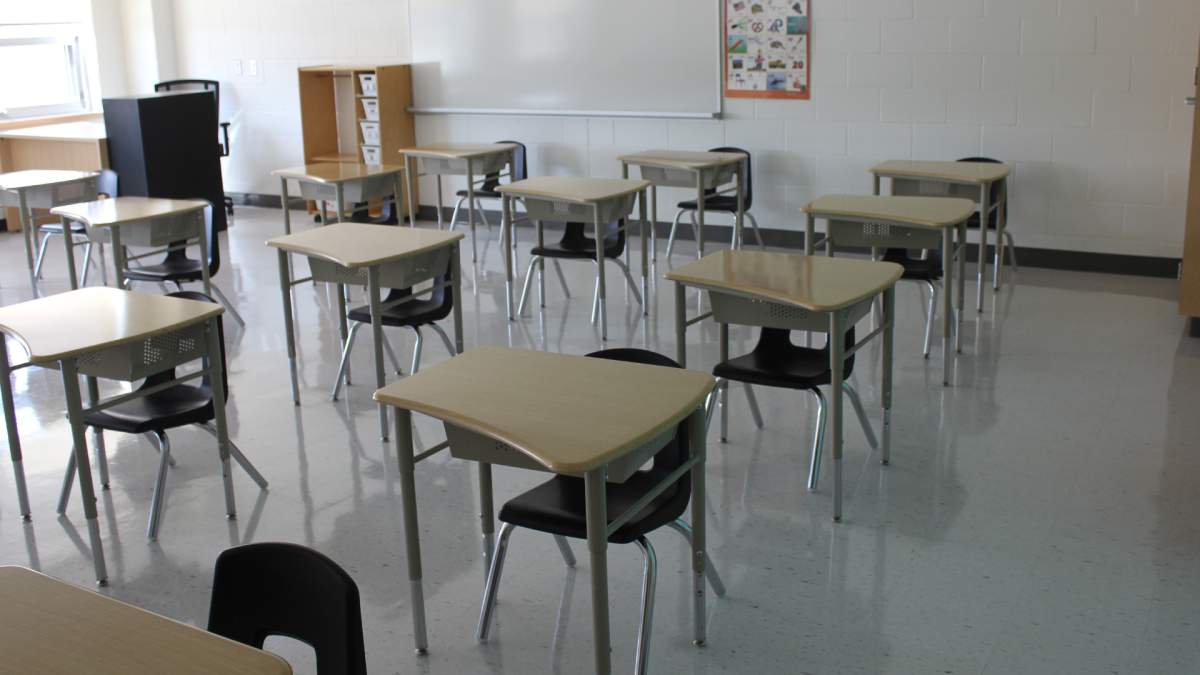The challenges school divisions are facing with the recent surge in COVID-19 cases were not unforeseen, said Shawn Davidson.

The head of the Saskatchewan School Boards Association said school divisions are prepared and have plans in place to deal with an ever-changing situation.
He said, however, there are only a limited number of staff to fill absenteeism and school divisions are facing challenges.
“Divisions are doing the best they can to manage (absenteeism) and to ensure that shifts are covered and that the job is getting done so far,” Davidson said.
“There just are not enough staff available to continue to operate in our normal capacity, and I can’t speak to exactly where or when, that’s all unpredictable, but it’s certainly something that is occurring.”
Saskatoon Public Schools cautioned this is the case at its schools.
In a letter to parents and caregivers Wednesday, the school division said there have been more positive cases in the last eight days in its 61 schools than during the first four months of the school year.
“As of right now, we’ve had 439 positive cases reported from students and from staff members of Saskatoon Public Schools,” said Shane Skjerven, SPS’s director of education.
He said all cases since the break involved a self-reported rapid antigen test. Prior to that, cases were reported through a PCR test.
“So that’s the difference and puts it into context why the numbers are so much higher, given the fact that we do know that there are higher cases in Saskatoon.”

Get daily National news
Skjerven said the rise in cases is putting pressure on division staff.
“We’re lucky enough in Saskatoon that we have a pretty robust substitute to teacher list and a list that’s helped, but we are still facing shortages,” he said.
“So, we’re doing things like redeploying some central office staff to schools to provide some additional support.”
Patrick Maze said schools are in “turmoil” with school divisions not knowing if they have enough staff to ensure student safety.
“Let alone the academic program, hoping that substitute teachers show up at your building in the morning to replace staff who aren’t there and finding out that only a few are provided and trying to shift on the fly to make sure that classes are covered,” said Maze, the head of the Saskatchewan Teachers’ Federation.
“(It’s) a very chaotic situation, very, very fluid. And the difficulty is that’s not in the best interest of the learning program for students.”
Maze said he doesn’t know how many teachers are off at any given time, a situation he called “frustrating.”
“In one situation last week, I was told a school was 16 staff members short,” he said.
“When you’re that short-staffed, it has a significant impact on our ability to keep students safe. And definitely, the learning environment suffers drastically as well.”
Skjerven said 13 classrooms in Saskatoon have moved to remote or online learning.
“Our teachers are excellent at pivoting and moving the classes online. We’ve got a lot of experience with that over the past 22 months, and we anticipate that that number will continue to grow,” he said.
“So, when we have evidence that there is some significant transmission of COVID-19 within the classroom, we work with the school and make the decision to move that class online for a time period.”
Where help is needed in dealing with the surge is contact tracing, said Davidson.
He said the Ministry of Health needs to help school divisions that are struggling with contact tracing and keeping families informed.
“A real challenge on the part of school divisions is to conduct the contact tracing work that is now expected of us as we move through this current wave,” Davidson said.
“We continue to hear from our members that it’s a real challenge to their capacity to conduct all of that contact tracing. And it’s really difficult for some of the divisions to manage all of this.”
Maze said a lot could have been done by the government to slow the virus from spreading.
“And now we’re paying the consequence. And sadly, there’s not a whole lot we can do right now,” he said.
“So, I’m not going to be surprised at all when we hear more situations of schools being forced online. And it’s unfortunate because the STF doesn’t want to go online. The teachers in Saskatchewan don’t want to go online.”










Comments